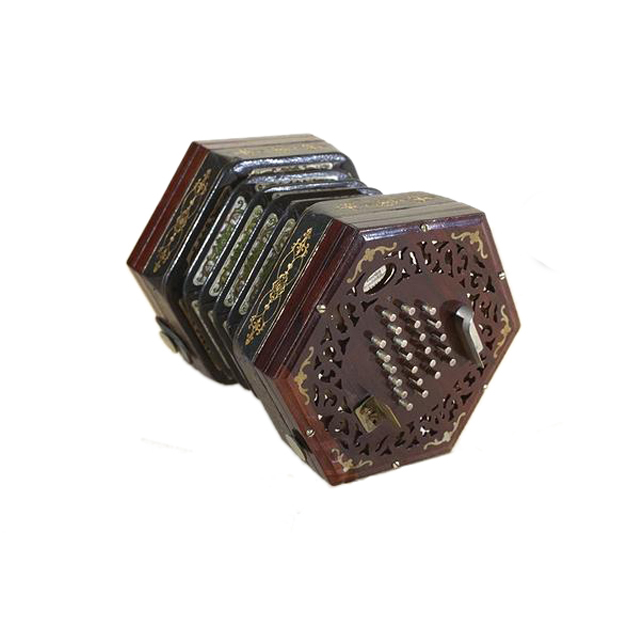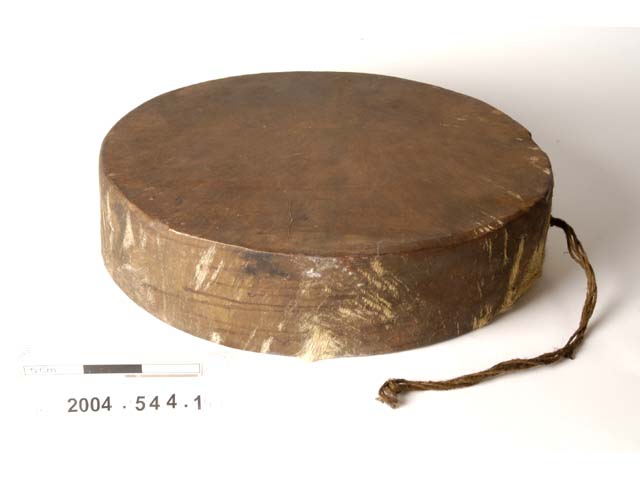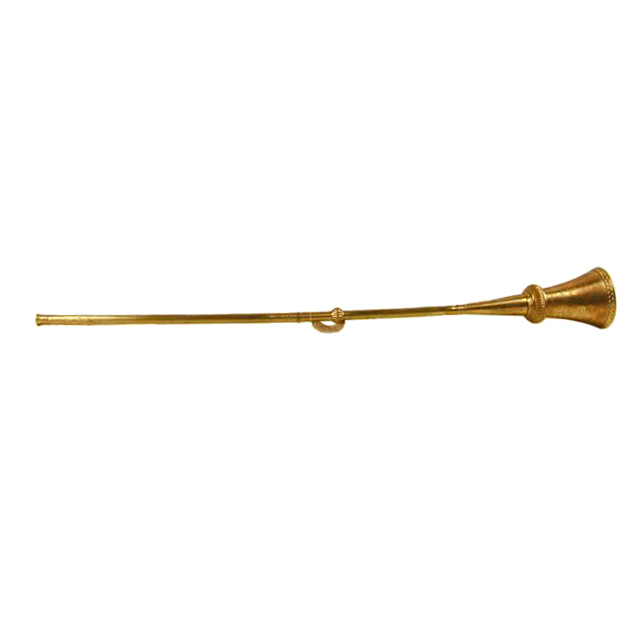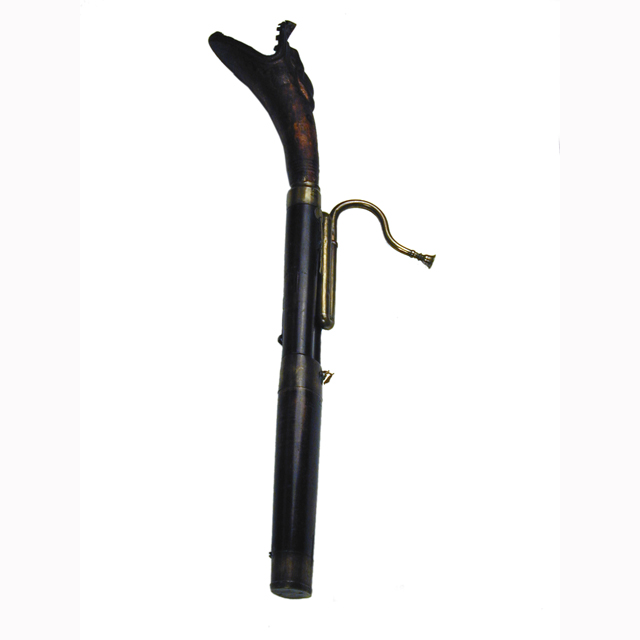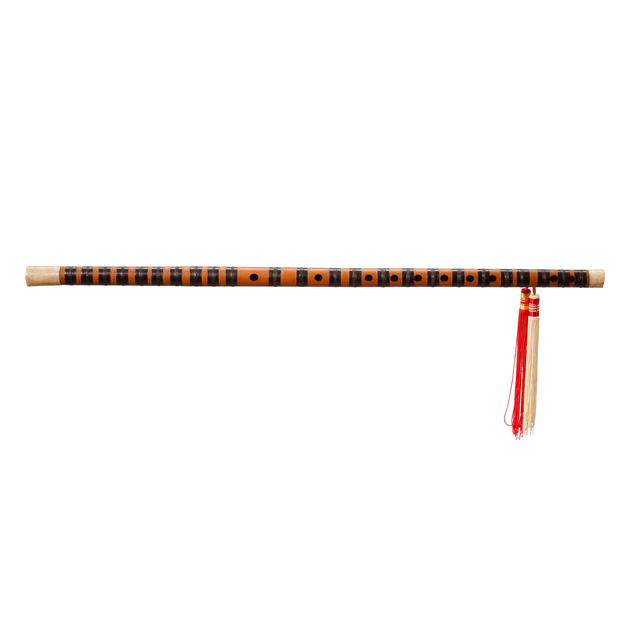
Transverse bamboo flute with hole for mirliton.
The di is the most common transverse flute of Chinese traditional music. Its most distinctive feature is the mirliton hole. This is the hole nearest the embouchure and is the second from the left on the photograph. It is designed to be covered by a paper membrane that vibrates as the flute is played to create a more nasal tone. (The membrane is missing from this example.) The most basic form of the di dates from the Han dynasty (206 BC-220 AD), but the mirliton is a more recent development, having been added around the 10th century AD.



